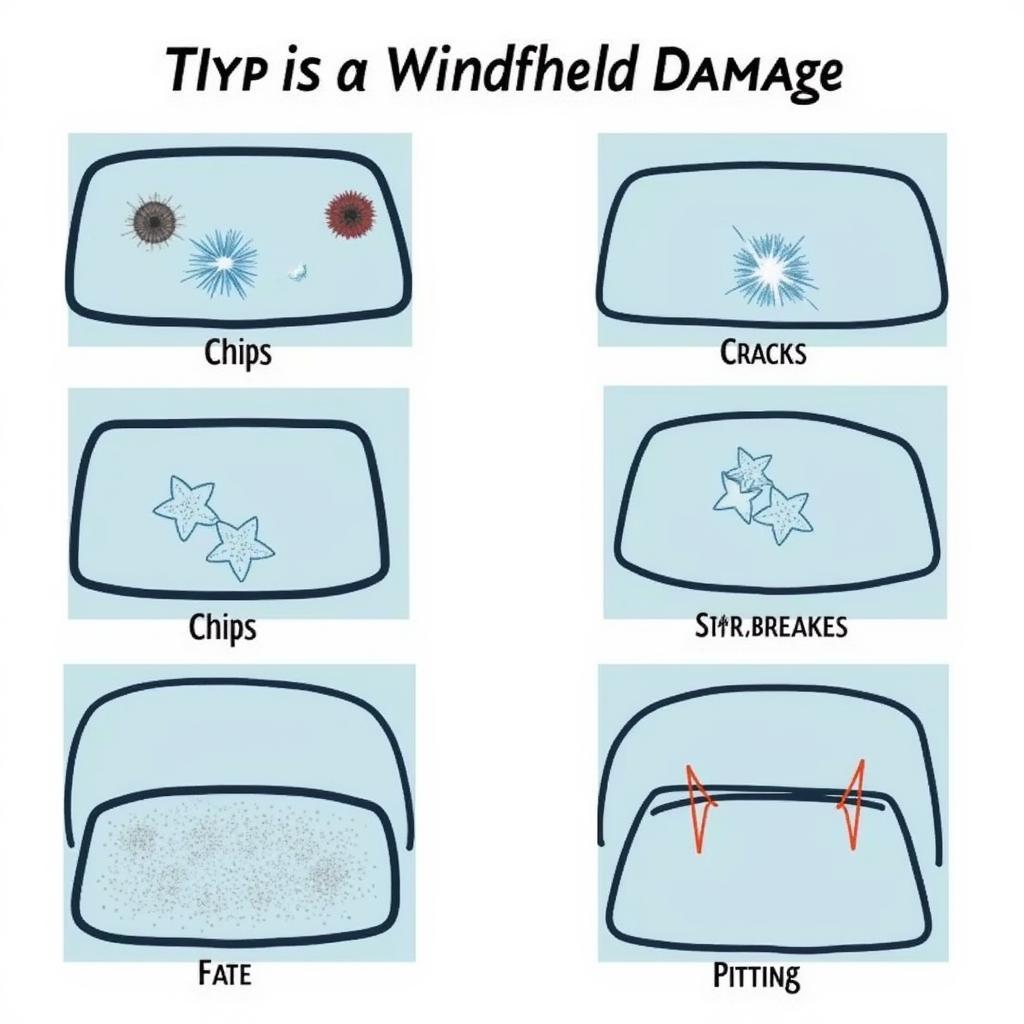Fixing holes in a fiberglass car spoiler can seem daunting, but with the right tools and techniques, it’s a manageable DIY project. This guide will walk you through the process, from assessing the damage to achieving a professional-looking finish.
Understanding the Damage: Types of Holes and Their Fixes
Before diving into the repair, it’s crucial to assess the damage. Is it a small pinhole, a larger crack, or a significant chunk missing? Each scenario requires a slightly different approach. Small holes can often be filled with a fiberglass resin paste, while larger damage might necessitate fiberglass cloth and resin. Understanding the extent of the damage will dictate the materials and techniques you’ll need for Fixing Holes In Fiberglass Car Spoiler.
Gathering Your Materials: Everything You Need for the Job
Having the right materials on hand will make the repair process smoother and more efficient. You’ll need:
- Safety Gear: Gloves, safety glasses, and a respirator are essential for protecting yourself from the harmful fumes of fiberglass resin.
- Cleaning Supplies: Acetone or wax and grease remover, sandpaper (various grits), and tack cloth.
- Repair Materials: Fiberglass resin, hardener, fiberglass mat or cloth (depending on the size of the hole), and body filler (for finishing).
- Tools: Mixing sticks, spreader, sanding block, and a cutting tool for the fiberglass mat.
Step-by-Step Guide: Fixing Holes in Fiberglass Car Spoiler
Fixing holes in fiberglass car spoiler involves a systematic approach:
- Clean the Area: Thoroughly clean the damaged area with acetone or a wax and grease remover to ensure proper adhesion of the repair materials.
- Sand the Surface: Sand the area around the hole with progressively finer grits of sandpaper to create a rough surface for the resin to bond to.
- Prepare the Resin: Mix the fiberglass resin and hardener according to the manufacturer’s instructions. Remember, the resin has a limited working time once mixed.
- Apply the Repair Material: For small holes, apply a fiberglass resin paste. For larger holes, cut a piece of fiberglass mat slightly larger than the hole and apply it over the damaged area, saturating it with the resin mixture.
- Build Up Layers (if necessary): For significant damage, you may need to apply multiple layers of fiberglass mat and resin, allowing each layer to cure before applying the next.
- Sand and Shape: Once the resin has fully cured, sand the repaired area smooth using progressively finer grits of sandpaper.
- Apply Body Filler: Apply a thin layer of body filler to achieve a perfectly smooth surface. Sand and shape the filler until it blends seamlessly with the surrounding area.
- Prime and Paint: Prime the repaired area and then paint it to match the rest of the spoiler.
How long does it take for fiberglass resin to dry?
Fiberglass resin typically takes 24-48 hours to fully cure. However, this can vary depending on the temperature and humidity.
Preventing Future Damage: Tips for Spoiler Care
Regularly inspect your spoiler for any signs of damage. Addressing small issues early can prevent them from becoming major problems.
“A stitch in time saves nine. Addressing minor chips and cracks promptly can save you from a more extensive and costly repair down the road,” advises John Davis, Automotive Repair Specialist at Davis Auto Body.
Conclusion
Fixing holes in your fiberglass car spoiler is achievable with a bit of patience and the right approach. By following these steps, you can restore your spoiler to its former glory and save money on professional repairs. Remember to always prioritize safety and follow the manufacturer’s instructions for the best results. For further assistance or if you have any questions, feel free to connect with us at AutoTipPro. Our phone number is +1 (641) 206-8880 and our office is located at 500 N St Mary’s St, San Antonio, TX 78205, United States.
FAQ
- Can I use regular epoxy instead of fiberglass resin? While epoxy can work in some cases, fiberglass resin is specifically designed for fiberglass repairs and offers better adhesion and durability.
- What type of sandpaper should I use? Start with a coarser grit (around 80-100) for initial sanding and gradually move to finer grits (220-320) for finishing.
- How do I know if the resin has fully cured? The resin will be hard and no longer tacky to the touch when fully cured.
- Can I repair a cracked fiberglass spoiler? Yes, the process is similar to fixing holes, using fiberglass mat and resin to bridge the crack.
- How can I prevent future damage to my spoiler? Avoid impacts and be mindful of low-hanging branches or other obstacles that could damage your spoiler. Regularly inspect it for cracks or chips.
- What if the hole in my spoiler is very large? For very large holes, it might be best to consult a professional body shop for advice or repair.
- Can I paint the repaired area myself? Yes, you can paint the repaired area, but ensure proper surface preparation and choose a paint that matches your spoiler’s existing color.






Leave a Reply